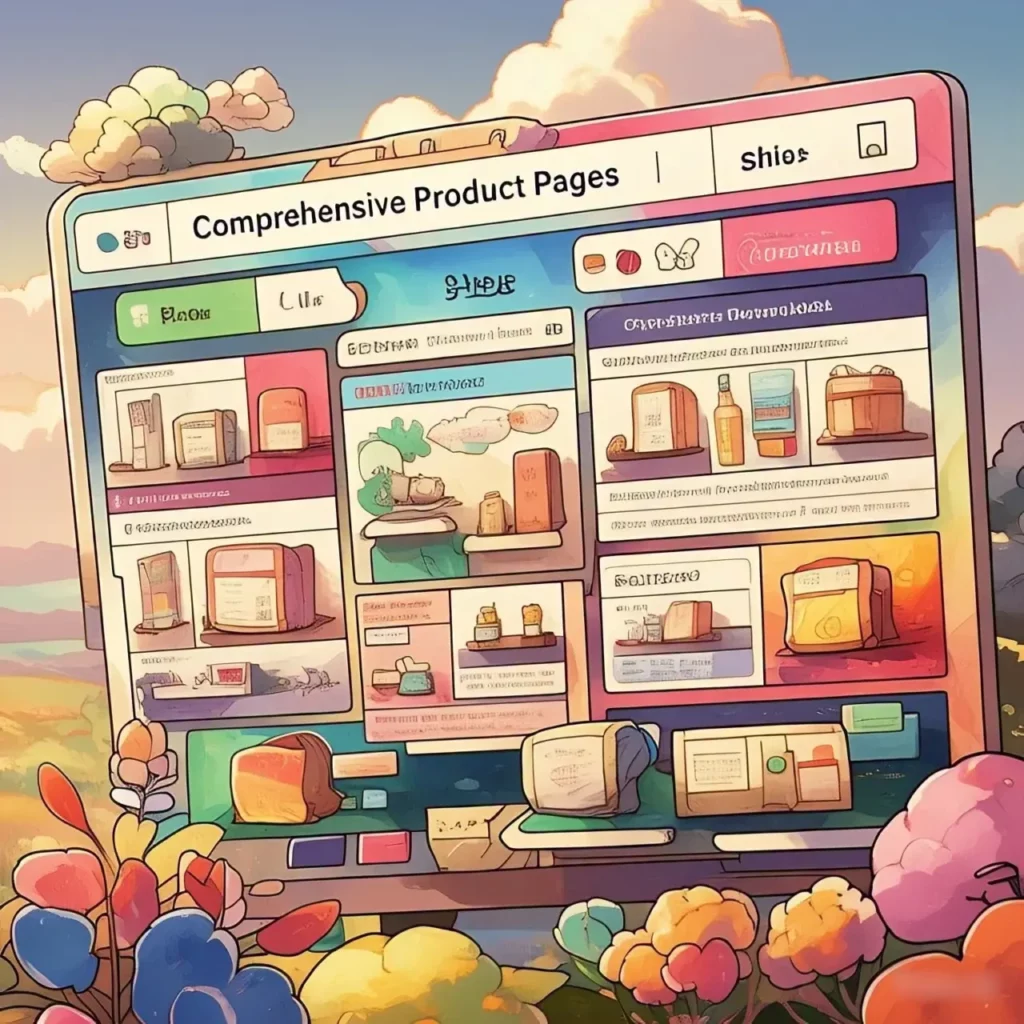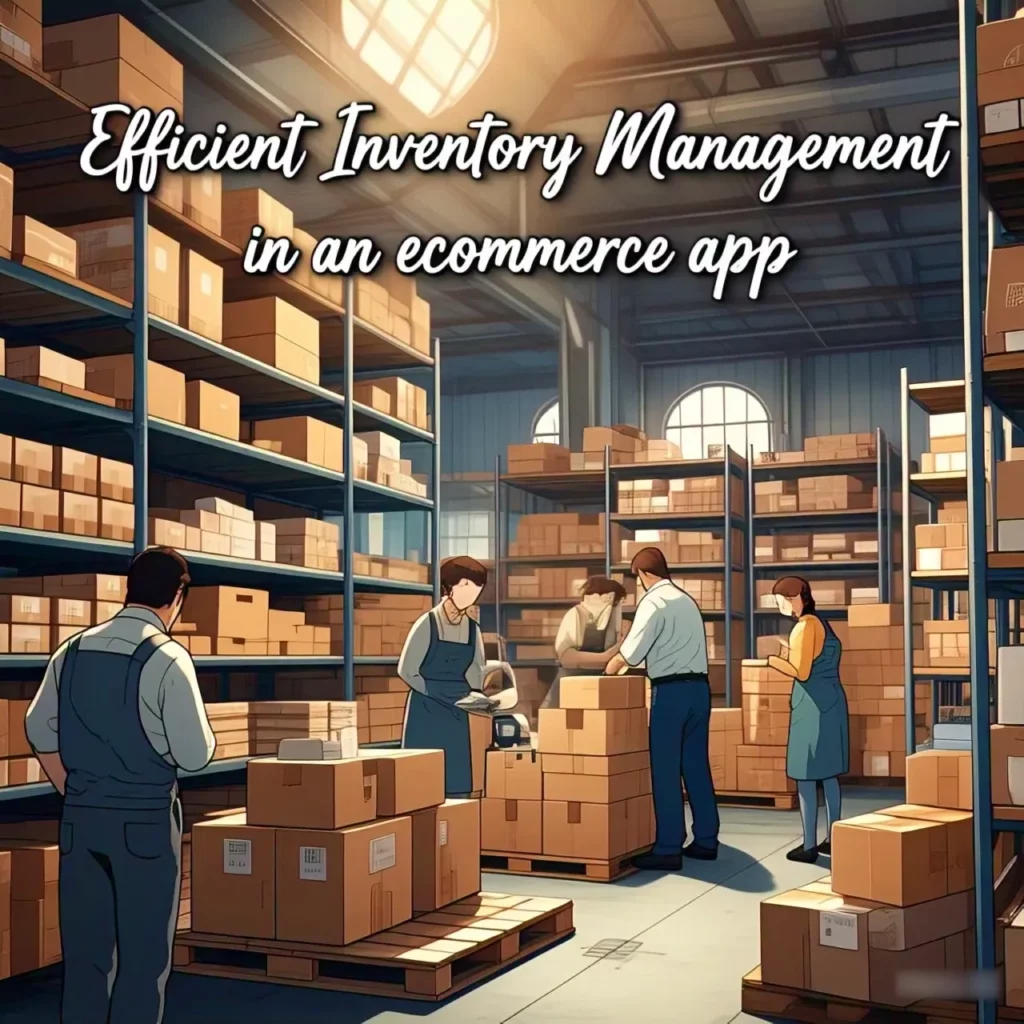
Introduction
Running a successful online store in 2025 requires more than just a great product—it demands a well-optimized website that meets customer expectations. With growing competition, businesses must offer a seamless shopping experience, secure transactions, and user-friendly navigation. At MN Service Providers, we specialize in building high-performing e-commerce websites that help businesses thrive online.
In this article, we’ll explore 10 features of e-commerce websites that are essential for attracting customers, boosting sales, and staying ahead of the competition. Whether you’re building a new e-commerce store or improving an existing one, these must-have features will help you create a website that drives traffic and converts visitors into loyal customers.

1. Mobile-First Design: Catering to the On-the-Go Shopper
In 2025, the prevalence of mobile devices in online interactions has made mobile-first design not just beneficial but essential for e-commerce success. With mobile devices projected to account for over 70% of global online traffic, prioritizing mobile-friendly interfaces is crucial to meet user expectations and maintain competitiveness. Among the 10 features of e-commerce, mobile-first design stands out as a key component of a successful online store.
Understanding Mobile-First Design
Mobile-first design involves creating websites starting with the mobile user experience before scaling up to larger screens. This approach ensures that the core functionalities and content are optimized for smaller screens, leading to a more intuitive and efficient user experience across all devices. This is why 10 features of e-commerce often highlight mobile-first design as a crucial element.
Benefits of Mobile-First Design
- Enhanced User Engagement: A mobile-optimized site offers seamless navigation and faster load times, reducing bounce rates and encouraging users to explore more products.
- Improved SEO Performance: Search engines like Google prioritize mobile-friendly websites in their rankings, leading to increased visibility and organic traffic.
- Higher Conversion Rates: Streamlined mobile experiences facilitate easier browsing and purchasing, directly impacting sales positively.
Best Practices for Implementing Mobile-First Design
- Responsive Layouts: Ensure that your website adapts gracefully to various screen sizes, providing a consistent experience across devices.
- Simplified Navigation: Design intuitive menus and clear calls-to-action to guide users effortlessly through your site.
- Optimized Media: Use high-quality images and videos that are compressed for quick loading without sacrificing visual appeal.
- Touch-Friendly Interfaces: Incorporate larger buttons and interactive elements suitable for touch controls to enhance usability.
By embracing mobile-first design principles, e-commerce businesses can create user-centric websites that cater effectively to the growing number of mobile shoppers, thereby boosting engagement and conversions. This is why mobile-first design is an essential part of the 10 features of e-commerce.

2. Advanced Site Search Functionality: Enhancing Product Discoverability
A well-optimized site search is crucial for helping customers quickly find what they need, improving their shopping experience, and boosting sales. In 2025, advanced search features are a must-have for e-commerce success, making it a key part of the 10 features of e-commerce.
Key Features of an Effective Search System
- Autocomplete & Suggestions: Predictive text helps users find products faster.
- Effective Filtering: Allows sorting by price, category, brand, and other attributes.
- Error Tolerance: Ensures accurate results even with typos or misspellings.
- AI-Powered Search: Uses natural language processing (NLP) to understand user intent better.
Best Practices for Implementation
- Ensure Mobile Optimization: The search bar should be easily accessible and responsive.
- Use Analytics: Track search queries to improve product listings and customer experience.
- Continuously Improve Search Algorithms: Regularly refine filters, indexing, and relevancy ranking.
A seamless search experience leads to increased engagement, lower bounce rates, and higher conversions, making it an essential feature for any successful e-commerce website in 2025. Since product discoverability is crucial, advanced search functionality is undoubtedly one of the 10 features of e-commerce.

3. Personalized User Experience: Leveraging AI for Tailored Shopping
In 2025, e-commerce stores are using Artificial Intelligence (AI) to make shopping more personal. AI studies what customers like and do, then suggests products they might want. This makes shopping easier and more fun, leading to happier customers who come back more often. AI-powered personalization is a significant factor among the 10 features of e-commerce.
How AI Personalization Helps
- Better Recommendations: AI looks at what you’ve bought or looked at before and suggests similar items.
- Special Deals Just for You: Stores can send you discounts on things you’re interested in, making you more likely to buy.
- Content That Fits You: Websites can change what you see based on your likes, showing you things that matter to you.
By offering a personalized user experience, e-commerce businesses can increase customer satisfaction and drive repeat purchases, solidifying this as one of the 10 features of e-commerce.

4. Streamlined Checkout Process: Reducing Cart Abandonment Rates
A smooth checkout process is key to keeping customers happy and reducing abandoned carts. In 2025, e-commerce sites focus on making checkout quick and simple. A streamlined checkout process is one of the most critical of the 10 features of e-commerce.
Tips for a Better Checkout
- Guest Checkout: Let customers buy without creating an account to save time.
- Auto-Fill Forms: Use tools that fill in addresses and payment info automatically to speed things up.
- Clear Pricing: Show all costs, including shipping and taxes, upfront to avoid surprises.
- Multiple Payment Options: Offer various ways to pay, like credit cards, digital wallets, and buy-now-pay-later services.

5. Robust Security Measures: Building Customer Trust
In 2025, keeping customer information safe is more important than ever for online stores. Among the 10 features of e-commerce, strong security measures play a vital role in protecting against hackers and building trust with shoppers.
Key Security Practices
- SSL Certificates and HTTPS: These tools encrypt data, making sure information like credit card numbers stays private during online transactions.
- Two-Factor Authentication (2FA): This adds an extra step when logging in, like entering a code sent to your phone, making it harder for unauthorized people to access accounts.
- Regular Security Updates: Keeping your website’s software up to date helps protect against new threats.
- PCI Compliance: Following Payment Card Industry standards ensures that your store handles credit card information securely.
By using these security measures, online stores can keep customer data safe and maintain their trust, reinforcing the importance of security as one of the 10 features of e-commerce.

6. Comprehensive Product Pages: Informing Purchase Decisions
Great product pages help customers understand what they’re buying and encourage them to make a purchase. Within the 10 features of e-commerce, comprehensive product pages play a crucial role in driving sales.
Tips for Better Product Pages
- Clear Product Titles and Descriptions: Use simple language to describe what the product is and its main features.
- High-Quality Images and Videos: Show multiple pictures from different angles and include videos if possible, so customers can see the product in detail.
- Customer Reviews: Allow shoppers to read feedback from others who have bought the product, helping them make informed decisions.
- Clear Pricing and Availability: Make sure the price is easy to find, and let customers know if the item is in stock.
By focusing on these elements, online stores can create product pages that inform and persuade customers, leading to more sales. Extensive product pages remain an essential part of the 10 features of e-commerce, ensuring a smooth shopping experience for customers.

7. Efficient Inventory Management: Ensuring Product Availability
As we explore these 10 features of e-commerce essential for 2025, efficient inventory management stands out as a critical component. Managing your inventory efficiently is like having a well-organized closet – you know exactly what you have and where to find it. In 2025, this becomes even more crucial for e-commerce success.
Key benefits of modern inventory management
- Real-time tracking prevents embarrassing “out of stock” messages after customers place orders
- Automated systems alert you when it’s time to reorder popular items
- Smart forecasting helps you prepare for seasonal peaks and special events
Here's what makes modern inventory management special
- Cloud-based systems let you check stock levels from anywhere
- Barcode scanning reduces human error in counting
- Automatic reorder points ensure you never run out of bestsellers
- Multi-warehouse support helps manage stock across different locations
Smart inventory management means
- Fewer disappointed customers due to stockouts
- Less money being held in excess inventory
- Better cash flow management
- More accurate financial planning

8. Multiple Payment Options: Catering to Diverse Customer Preferences
Continuing our exploration of the essential 10 features of e-commerce, multiple payment options represent a crucial element for any successful online store in 2025. Today’s shoppers expect to have plenty of payment choices, whether that’s through traditional methods or newer alternatives.
Must-have payment options include
- Credit and debit cards
- Digital wallets (Apple Pay, Google Pay)
- Buy-now-pay-later services
- PayPal and similar platforms
- Bank transfers
- Cryptocurrency options
Benefits of diverse payment methods
- Higher conversion rates when customers find their preferred payment option
- Increased trust from international customers
- Better chances of completing sales with younger, tech-savvy shoppers
- Reduced cart abandonment rates
Remember to
- Keep payment processing secure
- Display payment options clearly
- Offer local payment methods for international markets
- Consider emerging payment technologies

9. Integrated Customer Support: Providing Immediate Assistance
Among the 10 features of e-commerce that define successful online businesses, integrated customer support plays a vital role in ensuring customer satisfaction and loyalty. In 2025, customers expect quick, helpful responses through multiple channels.
Essential support channels include
- 24/7 chatbots for instant responses
- Live chat during business hours
- Email support
- Social media messaging
- Phone support for complex issues
AI-powered support features
- Automatic response to common questions
- Smart routing to appropriate team members
- Sentiment analysis to identify urgent issues
- Multilingual support capabilities
Best practices
- Maintain consistent response times
- Keep support knowledge bases updated
- Train AI systems regularly
- Provide personalized responses when possible

10. Search Engine Optimization (SEO): Driving Organic Traffic
Completing our comprehensive guide to the 10 features of e-commerce, SEO remains a powerful tool for attracting customers without paying for ads. Think of it as your store’s digital signpost, helping people find you online.
Essential SEO elements
- Keyword-optimized product descriptions
- Fast-loading pages
- Mobile-friendly design
- Quality backlinks from reputable sites
Content strategies that work
- Regular blog posts about your products
- How-to guides and tutorials
- Customer success stories
- Industry news and updates
Technical SEO checklist
- Clean URL structure
- Proper meta tags
- XML sitemaps
- Schema markup for products
- Regular site speed optimization
Focus on creating content that helps your customers solve problems or learn something new. This naturally attracts both search engines and shoppers to your site.
Conclusion
A great e-commerce website isn’t just about selling products—it’s about creating an effortless shopping experience that keeps customers coming back. By implementing these 10 features of e-commerce, you can build a website that is fast, secure, user-friendly, and optimized for conversions.
From mobile-first design to high-quality product pages, every feature plays a role in improving customer satisfaction and increasing sales. If you need expert help in building a high-performing e-commerce site, contact us today and let’s turn your vision into reality!
Frequently Asked Questions (FAQ)
E-commerce, short for “Electronic Commerce,” refers to the online buying and selling of products and services. It includes various business models like B2B, B2C, C2C, and D2C.
The 10 features of e-commerce include a user-friendly interface, mobile responsiveness, secure payment gateways, fast loading speed, SEO optimization, customer reviews, personalized recommendations, multi-channel integration, AI-driven chatbots, and a seamless checkout process. These features help businesses enhance customer experience and maximize conversions.
The 5 P’s of e-commerce—Product, Price, Promotion, Place, and People—are key factors that influence online business success. They help define a brand’s strategy, ensuring competitive pricing, effective marketing, seamless delivery, and strong customer relationships.
E-tailing, or electronic retailing, includes features like digital storefronts, personalized shopping experiences, secure transactions, real-time inventory tracking, and omnichannel selling. These features improve customer satisfaction and drive sales in the competitive e-commerce market.
E-commerce offers advantages such as global reach, 24/7 availability, lower operational costs, personalized shopping experiences, and data-driven marketing strategies. These benefits make online businesses more scalable and efficient than traditional retail.
The 5 marketing concepts are the Production Concept (e.g., budget smartphones with high demand), Product Concept (e.g., Apple’s innovation-driven products), Selling Concept (e.g., aggressive promotions in the insurance industry), Marketing Concept (e.g., customer-centric branding like Amazon), and Societal Marketing Concept (e.g., eco-friendly brands like Patagonia).
Melvin C Varghese is an author with more than 8 years of expertise in DevOps, SEO and SEM. His portfolio blogs include a Digital Marketing blog at https://melvincv.com/blog/ and a DevOps blog at https://blog.melvincv.com/. He is married with 2 small kids and is a simple person who eats, sleeps, works and plays. He loves music, comedy movies and the occasional video game.